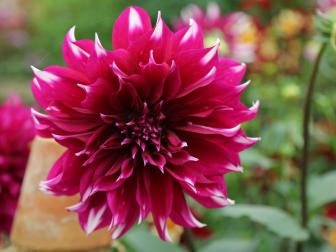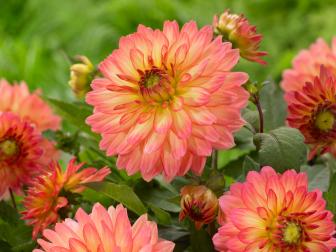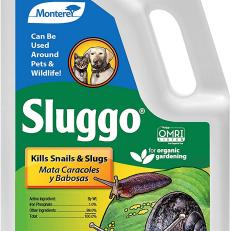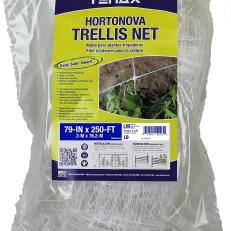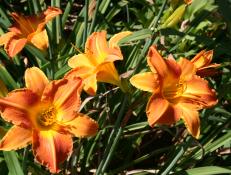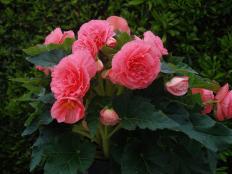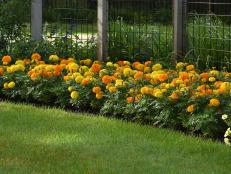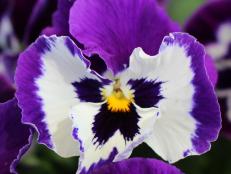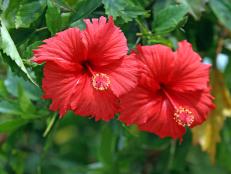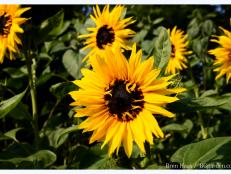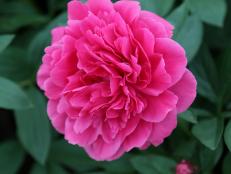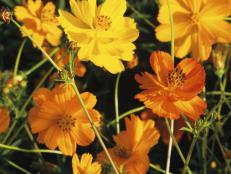How to Grow and Care for Dahlias
Learn how to successfully select, plant and tend to dahlias from garden to vase — with tips for gardeners in a range of climates.
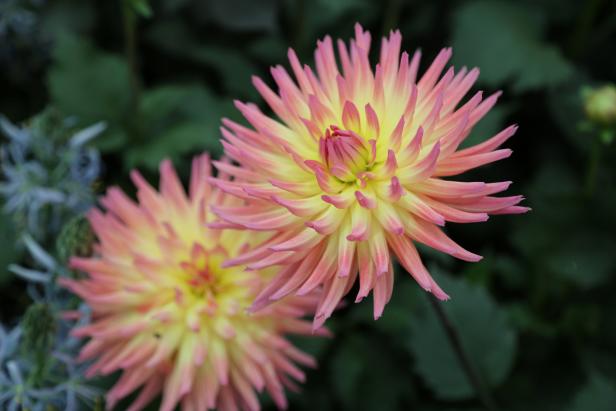
Image courtesy of Felicia Feaster
Dahlia 'Karma Sangria'

There is an undeniable diva of the late summer, early fall garden — and it's the dahlia. Blooming in rainbow bursts above vibrant foliage, a bed of dahlias at peak productivity is a perfectly orchestrated performance. Every stem has stage presence. In the last gasps of summer, when autumn begins to whisper of its arrival, most everything in the garden looks spent. But not the dahlia — this is her moment to shine.
Thanks to the current renaissance of naturalistic floral design and small-scale flower farming, dahlias are basking in the glow of their fame. Attend most any farmer's market from July through October, and you are likely to find shoppers snagging dahlias by the armful. In areas with milder summers, you can reliably find dahlias from July to the first frost. In zones with hot summers, there is typically a first flush in mid-summer, followed by a lull in August, with peak productivity from September to October.
20 Stunning Dahlia Varieties 21 Photos
Feast your eyes on more than a dozen varieties of these sumptuous blooms and find the perfect dahlia for your garden.
Dahlias can be found in a painterly palette of colors and forms. Modern cultivars are all hybrids and have been shaped over decades to suit our aesthetic cravings. The only color lacking in the continuum is true blue. While dazzling, dahlias can feel daunting to grow — especially for southern gardeners. Read on to learn how to plant and care for dahlias with confidence, armed with climate-specific tips for success.
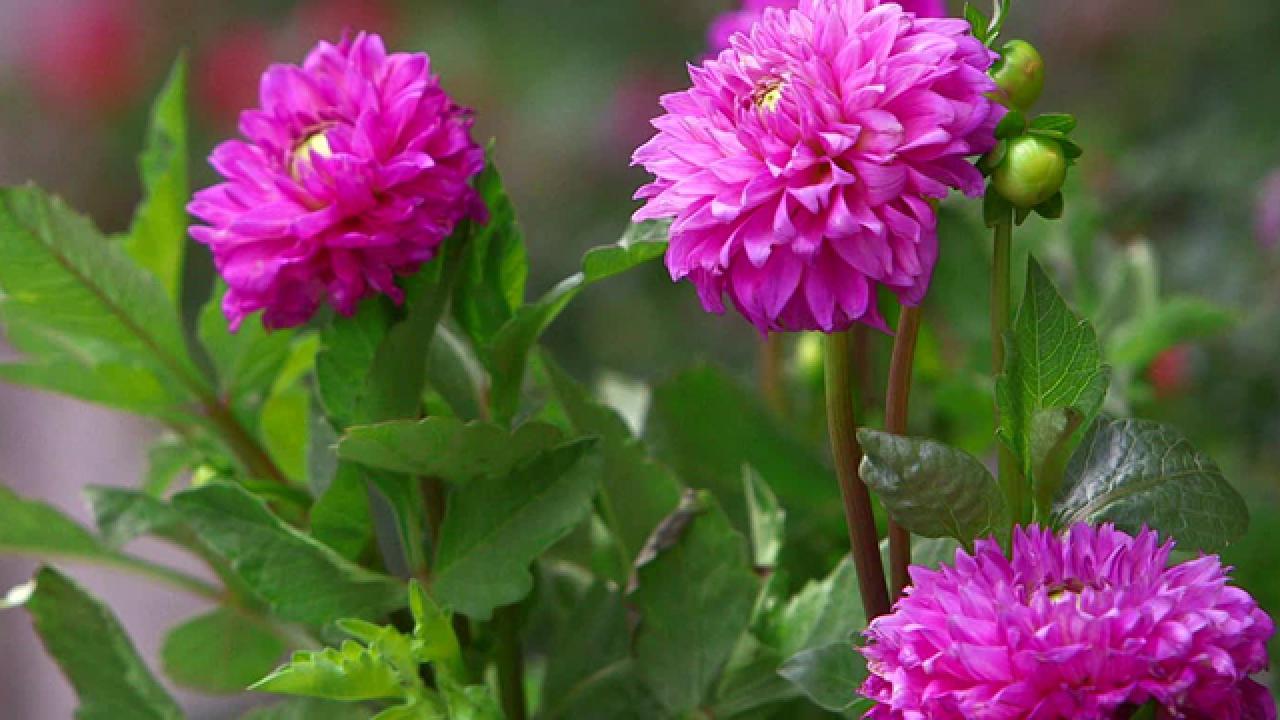
Types of Dahlias
Dahlia breeders use a long list of terms to describe and organize the many types of dahlias, but the simplest classification to understand is double versus single-flowered varieties.
Most of the dahlias we know are double-flowered; they are longer-lasting cut flowers with high visual impact. Double-flowered dahlias are recognized by their tightly layered configurations of petals — some ruffled and some pointed or tubular. The double-flowered types range in size from 1 inch (the pompons) to a whopping 10 inches (the dinnerplates), with impressive variety between.
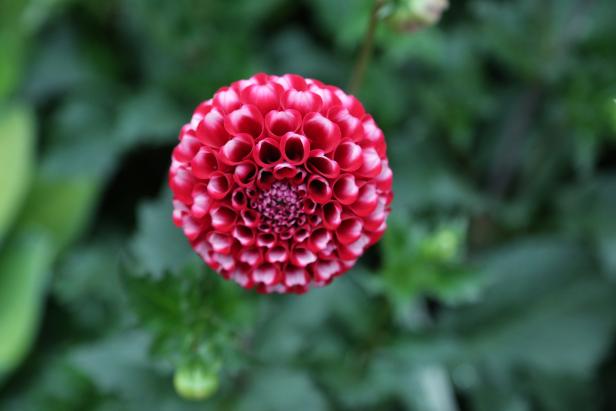
Image courtesy of Felicia Feaster
Dahlia 'Tommy Keight' is a pompon dahlia type.
The single-flowered types have their own merits: Their pollen-rich centers beckon the bees, and they tend to fit more tidily into containers. Some single-flowered types have burgundy foliage, offering striking contrast in the landscape. The single-flowered cultivar 'Appleblossom' is a favorite among the cherubic "collarette" types.
Depending on your desired use, explore the range of dahlias available. While enormous "dinnerplate" varieties like Cafe au Lait are coveted by bridal blogs, they have shorter vase life and lower productivity for many growers. If you're looking for abundance and longer vase life, favor the "ball" (e.g. Jomanda) or "pompon" (e.g. Koko Puff) types — playful, round dahlias with tightly geometric florets. Growing a mix of types helps ensure a long harvest window. Over time, hone your collection based on what works well for you.
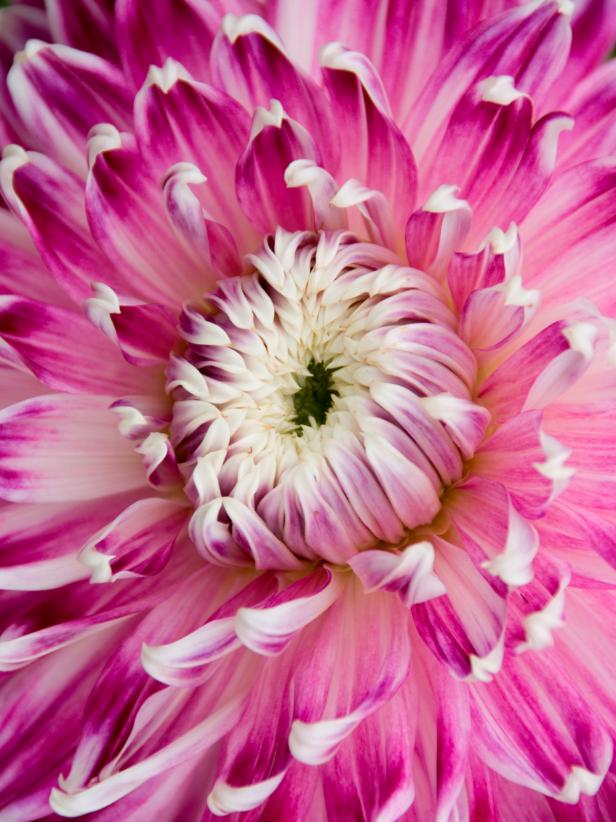
Longfield Gardens
How to Grow Dahlias
While dahlias can be easy to grow in certain environments, this isn't the case everywhere. Dahlias are native to the Mesoamerican highlands, thriving in warm days and cool nights. In similar climates, like the Pacific Northwest and parts of New England, dahlias churn out blooms, feeling right at home. For more southerly growers, persistent heat, waterlogged soil and pest pressure makes it more challenging to generate the bountiful armloads of blooms seen across social media. Without ideal conditions, dahlias will need special treatment to stay happy.
Sourcing Dahlia Tubers and Choosing Varieties
The range of dahlia cultivars being sold today is astounding, so it's hard not to get carried away while shopping. While a Pacific Northwest grower may be able to grow most any variety to peak performance, gardeners in the South must be more selective. The bulb supplier Old House Gardens has a helpful chart of dahlia varieties, with a column indicating heat tolerance. In addition to consulting regionally specific research, connect with the local dahlia society, cooperative extension and growers nearby to learn varieties that have a good track record in your area. Shop around with Floret's helpful list of top dahlia sources in the United States.
Preparing a Bed for Dahlias
Site selection is key when preparing to grow dahlias. If you live in a region that closely mimics dahlias' native climate (warm days, cool nights), plant your tubers in full sun. However, if you live in a region with long, hot summers, your dahlias will thrive with part shade. Ideally, in zones 7-10, dahlias should be grown in morning sun with filtered afternoon light. In any case, tubers require excellent drainage to avoid rot.
Amend your soil with plenty of organic matter to ensure rich nutrition, active biology and excellent drainage. This may include compost, leaf mold, well-rotted manure, peat moss, or soil conditioner. If you are planting into heavy clay, you'll need a mix of these crumbly amendments, along with sand, to build soil structure and aeration. It is advisable to plant your dahlias into wooden raised beds, rather than straight into the soil, in heavy clay areas.
Planting Dahlias in the Garden
Once you have passed the last frost date and soil temperatures have warmed to 55-60 degrees, it's time to grow dahlias.
Plant dahlia tubers 18 to 24 inches apart, at a depth of 4 to 6 inches. Further spacing is advisable for most gardeners to ensure proper airflow and avoid disease. Closer spacing can work for growers who plan to harvest deeply and frequently.
How to Plant Dahlias
Learn the basics of planting dahlias — including simple tips to improve your success.
Do not water dahlias at planting time; tubers contain the moisture they need to sprout. Instead, wait until you see 6 to 12 inches of foliage, then water (unless rain is sufficient). With adequate rainfall and generous mulching, most gardeners only need to irrigate dahlias deeply once or twice a week (albeit more frequently in severe drought and heat). Drip irrigation is ideal, as it delivers water directly to the roots, rather than to the foliage.
Starting Dahlia Tubers Indoors
Whether you are bringing stored tubers out from their winter slumber or starting with newly purchased ones, it is possible to get a head-start by pre-sprouting and potting them up indoors, about a month before your last frost. To help new growing eyes develop and gauge the viability of stored tubers, slightly moisten the medium they're kept in and move them to a warm space (at least 60 degrees). After a week or so, you'll see the signs of awakening. At this point, pot the tubers up into containers just like you would any other seedling, and keep them under grow lights until planting time.
How to Care for Dahlias
Fertilizing Dahlias
Only fertilize if a soil test indicates a deficiency or you know the soil has been depleted by heavy-feeding crops. Over-fertilization can lead to adverse environmental impacts and is a waste of money. Seek a flower- or bulb-specific, slow-release organic fertilizer that is low in nitrogen and higher in phosphorus. Work the fertilizer into the soil thoroughly before planting if needed, or side-dress monthly through the season.
Pinching Dahlias
When dahlias reach about 6 to 12 inches tall, with 3 to 4 sets of true leaves, they should be pinched to promote branching. With sharp pruners, snip off the central growing tip just above a leaf node, around 6 inches tall. At the place where this cut was made, the plant will generate two new shoots. A sturdy, branching base leads to strong stems and more flowers.
Mulching Dahlias
Dahlias thrive through summer with the assistance of thorough mulching. Leaf mold, bark or straw mulch helps keep the soil cooler and more consistently moist, and reduces weed pressure.
Staking and Supporting Dahlias
Staking dahlias is essential, as the branchy growth and heavy blooms break easily. If you're growing a small selection of tubers, stake the plants individually, as you would peppers or tomatoes.
If you have a large bed or long row of dahlias, individual stakes are unnecessary. Try the corral method instead: Pound in stakes about every 10 feet and weave twine both around the perimeter and between plants. This technique adapts well to many different bed shapes and scales. If your dahlias are planted in straight rows, horizontal netting (like Hortonova by Tenax) is an effective option, and it can be reused.
Disbudding Dahlias
Once dahlias start producing flower buds, you will notice that each branch produces one central bud and two lateral buds. Using sharp snips, remove the two lateral buds, leaving the central bud to fully develop. This will result in larger, higher quality blooms on straight, usable stems.
Dahlia Pests and Disease
Slugs and snails top the list of dahlia troubles. Apply an OMRI-listed bait or repellant like Sluggo to your dahlia bed just after leafy growth emerges. Plant a slug-deterring companion for prevention, like wormwood, rue or rosemary.
Particularly in the South, Japanese beetles are inevitable foes. They are best managed by hand-picking in the morning or evening. Stroll the garden with a bucket of soapy water, shaking beetle-ridden stems so the bugs fall into it. If left alone, they reproduce at an astonishing rate. Farmers often cover dahlia buds in fine mesh or panty hose while they develop to protect them from decimation by chewing insects.
Tuber rot and powdery mildew are also common with dahlias. Planting with proper spacing into well-draining soil will help avoid rot and powdery mildew. If you see the baby powder-like signs of mildew, remove and dispose of all affected leaves, as the spores spread readily. Then, apply an organic product like Safer Garden Fungicide or diluted neem oil solution, according to application instructions.
Many gardeners swear by the regular application of a homemade foliar feed like compost tea to keep plants' natural defenses up, avoiding pervasive pest and disease issues — kind of like taking your vitamins and probiotics.
Buy Supplies
Hot Summer Dahlia Health
Knowing how to help plants handle the heat will make us all more adaptable gardeners. If summer heat is causing stress to your dahlias, providing a bit of shade during steamy afternoons can work wonders. If planting in part-shade is unavailable to you, a simple wooden structure with shade cloth can be constructed for summer use.
In more tropical climates, consistently wet conditions make dahlia care challenging, but not impossible. Focus on providing excellent drainage by planting into raised beds or containers. If planting in containers, each tuber should be in a 5- to 7-gallon pot or grow bag.
During periods of dry heat, spraying dahlia foliage down with water, using your hose's shower or mist setting, can help cool the plants and reduce stress. Some southern gardeners cut foliage back to 12" or so in summer's peak to reduce the plants' workload and allow them to rest before the fall show.
Digging, Dividing and Storing Dahlia Tubers
Overwintering Dahlias
After the first frost, it's time to protect your tubers from winter's chill. In most places, dahlia tubers must be dug, divided and stored during winter before replanting next spring. For those in warm zones with mild winters, leaving tubers in the ground is an option.
How to Store Dahlias for Winter
When the first freeze hits, it's time to tuck away your dahlias until spring returns.
To overwinter dahlias in the ground, cut stems to soil level a few weeks after the frost and cover the whole bed with a thick layer of mulch until spring. Even if tubers are left in the ground routinely, they should be dug every three years for division. While dahlia tubers are pricey initially, their eager multiplication makes them a worthwhile investment. Dahlia cuttings are easy to root — another strategy for maximizing your tuber collection and sharing with flower-loving friends.
How to Harvest Dahlias as Cut Flowers
Harvest dahlia flowers when they are fully open or just before. Check the back of the bloom before cutting; wilted petals at the base indicate the flower is past its prime. Blooms cut at the proper stage offer 5 to 7 days in the vase with clean, cool water.
If you want to enjoy dahlias as cut flowers but aren't growing them yourself, check your farmers market or locally sourcing florist. In late summer and early fall, you are sure to find a prismatic selection. Locate a grower near you through the Association of Specialty Cut Flowers' handy flower-finding site.






